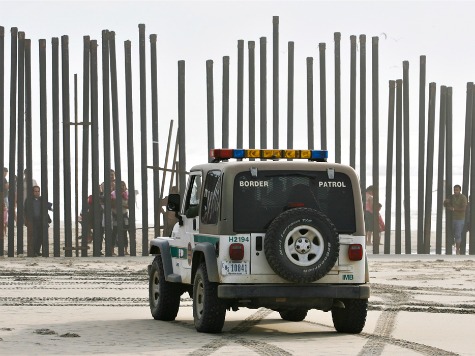(AP) New signs of rising illegal immigration into US
By HOPE YEN
Associated Press
WASHINGTON
After dropping during the recession, the number of immigrants crossing the border illegally into the U.S. appears to be on the rise again.
The total number of immigrants living in this country unlawfully edged up from 11.3 million in 2009 to 11.7 million last year, with those from countries other than Mexico at an apparent all-time high, according to a report released Monday by Pew Research Center’s Hispanic Trends Project.
The change is within the margin of error for this survey, and there will be a more precise census measure released later this year. Still, based in part on other factors such as increased U.S. border apprehensions, the sharp decline in illegal immigration from 2007-2009 has clearly bottomed out, with signs the numbers are now rising, Pew said.
Pew said that among the six states with the largest numbers of immigrants here illegally, only Texas had a consistent increase in illegal immigration from 2007 to 2011, due in part to its stronger economy. Its number was unchanged from 2011 to 2012. Two states _ Florida and New Jersey _ had an initial drop but then increases during the same 2007-2011 period. Three states _ California, Illinois and New York _ showed only declines.
Analysts said it was hard to predict whether immigrants in the country illegally could eventually exceed the record total of 12.2 million in 2007. Continued modest increases are possible, but another big surge like the one seen in the late 1990s and early 2000s isn’t likely, due in part to demographic factors such as Mexico’s aging workforce.
Analyses of census data from the U.S. and Mexican governments show that the number of immigrants here illegally peaked at 12.2 million in 2007, during the U.S. housing boom, and before the recession hit. It then dropped roughly 7 percent to 11.3 million in 2009, the first two-year decline in two decades, due to the weak U.S. economy which shrank construction and service-sector jobs. Much of the decline came as many Mexican workers who already were here saw diminishing job opportunities and returned home.
Since then, the U.S. economy has shown some improvement, while public opinion regarding immigrants has shifted in some cases in favor of granting legal rights. For instance, some state legislatures this year have passed immigrant-friendly measures such as college tuition breaks and rights to driver’s licenses, even as others enacted laws aimed at tightening the system.
In all, the number of Mexicans here illegally stood at roughly 6 million last year, down from the 2007 peak of 6.9 million and largely unchanged since 2010. Mexicans now make up 52 percent of immigrants in the U.S. illegally, down from 57 percent in 2007.
The level of illegal immigration from countries other than Mexico rose to a record 5.65 million, higher than the 5 million in 2009 and apparently surpassing the 2007 peak of 5.25 million. The record number in 2012 is a preliminary determination because of margins of error in the surveys.
In past surveys, non-Mexican immigrants here illegally have come primarily from Central America, at roughly 15 percent; followed by South America, the Caribbean and other parts of Latin America at 12 percent; and Asia, at roughly 10 percent. The Obama administration has recently said that unrest and poverty in many Central American nations are a large factor behind illegal immigration into the U.S.
Separately, U.S. Border Patrol data show a modest increase in the number of apprehensions at the Mexican border from 2011 to 2012, increasing to 365,000. That was because of growing apprehensions of non-Mexicans, as opposed to Mexicans, which declined. Historically, increases in border apprehensions have tended to coincide with increases in illegal immigration.
In particular, analysts have said that immigrants are shifting their migration paths from Arizona to deep southern Texas, due in part to that state’s stronger economy, as well as increases in Central American immigrants who seek a more direct route to the U.S.
The latest numbers on illegal immigration come as prospects for passage of a comprehensive U.S. immigration bill appear dim. A bill passed by the Democratic-controlled Senate and backed by the White House includes billions for border security as well as a 13-year path to citizenship for the 11 million immigrants already here illegally.
But most House Republicans have rejected this comprehensive approach, and the House Judiciary Committee has moved forward with individual, single-issue immigration bills that could come to the floor sometime later this year or next. It’s unclear whether the GOP-dominated House will ever pass legislation that could form the basis for a final deal with the Democratic-controlled Senate.
The Pew analysis is based on census data through March 2012. Because the Census Bureau does not ask people about their immigration status, the estimate on illegal immigrants is derived largely by subtracting the estimated legal immigrant population from the total foreign-born population. It is a method that has been used by the government and Pew for many years and is generally accepted.
___
Associated Press writer Erica Werner contributed to this report.
New Signs of Rising Illegal Immigration into US

COMMENTS
Please let us know if you're having issues with commenting.